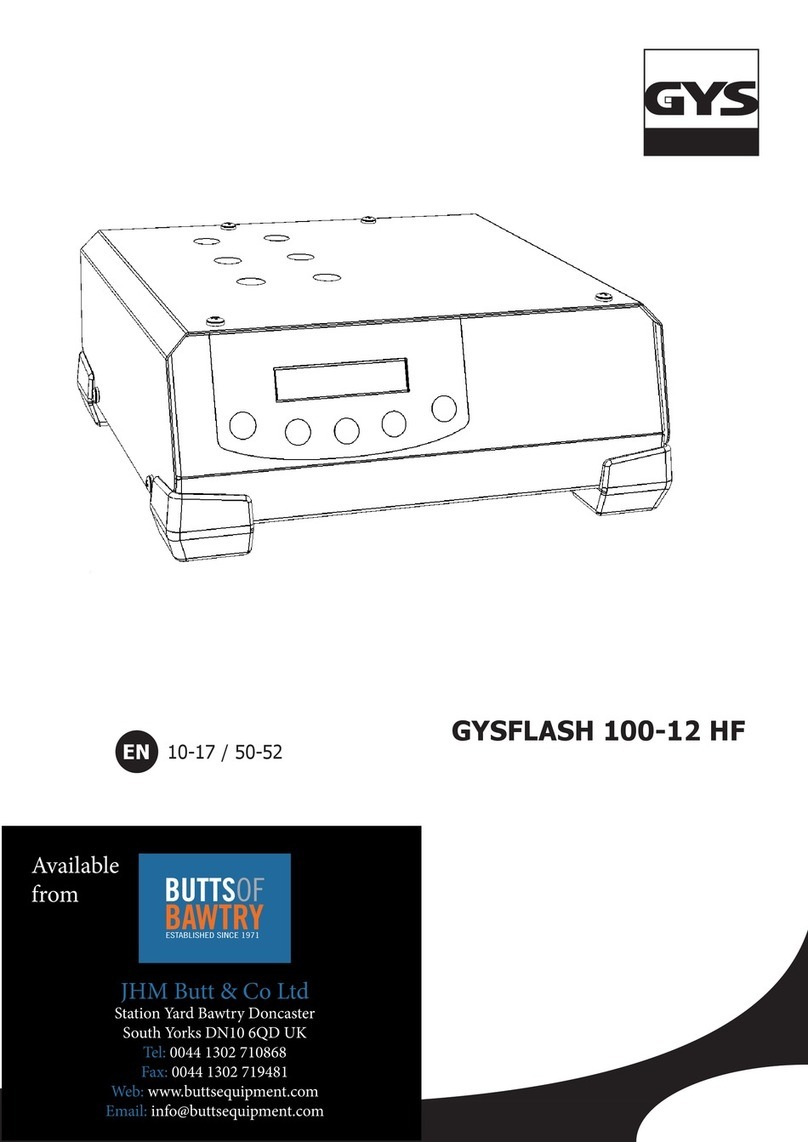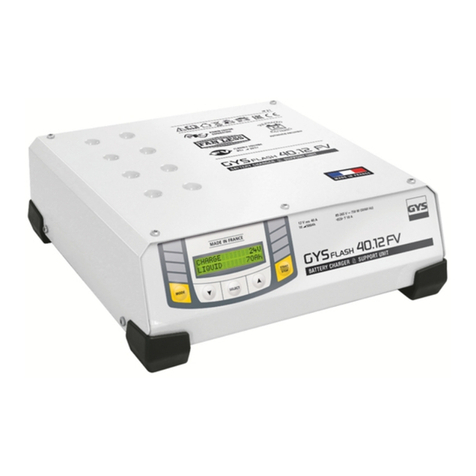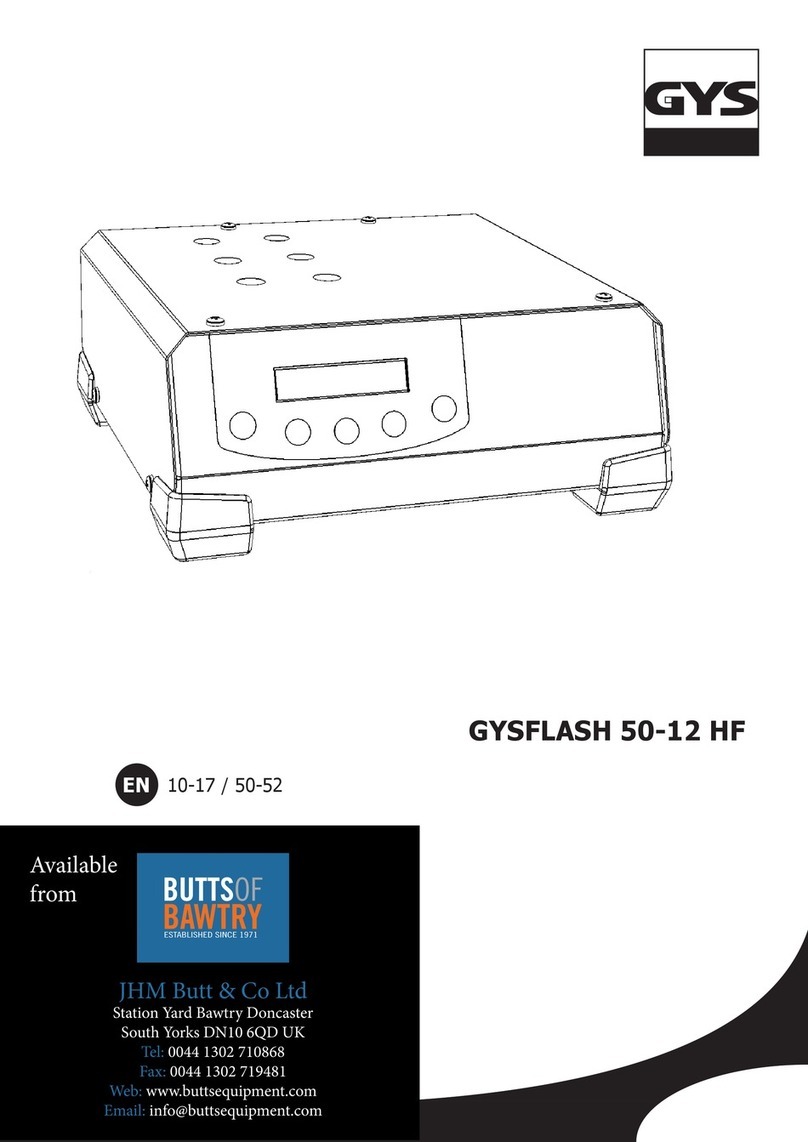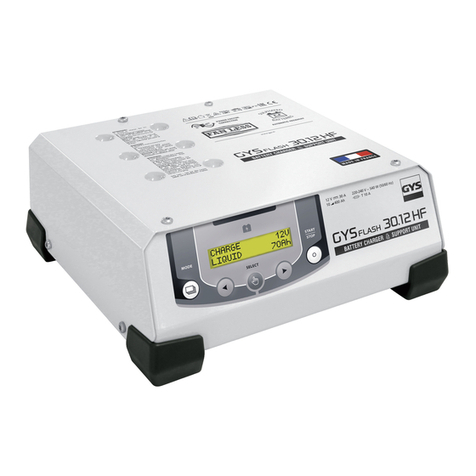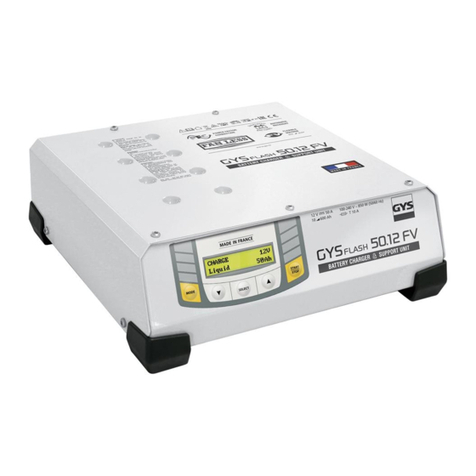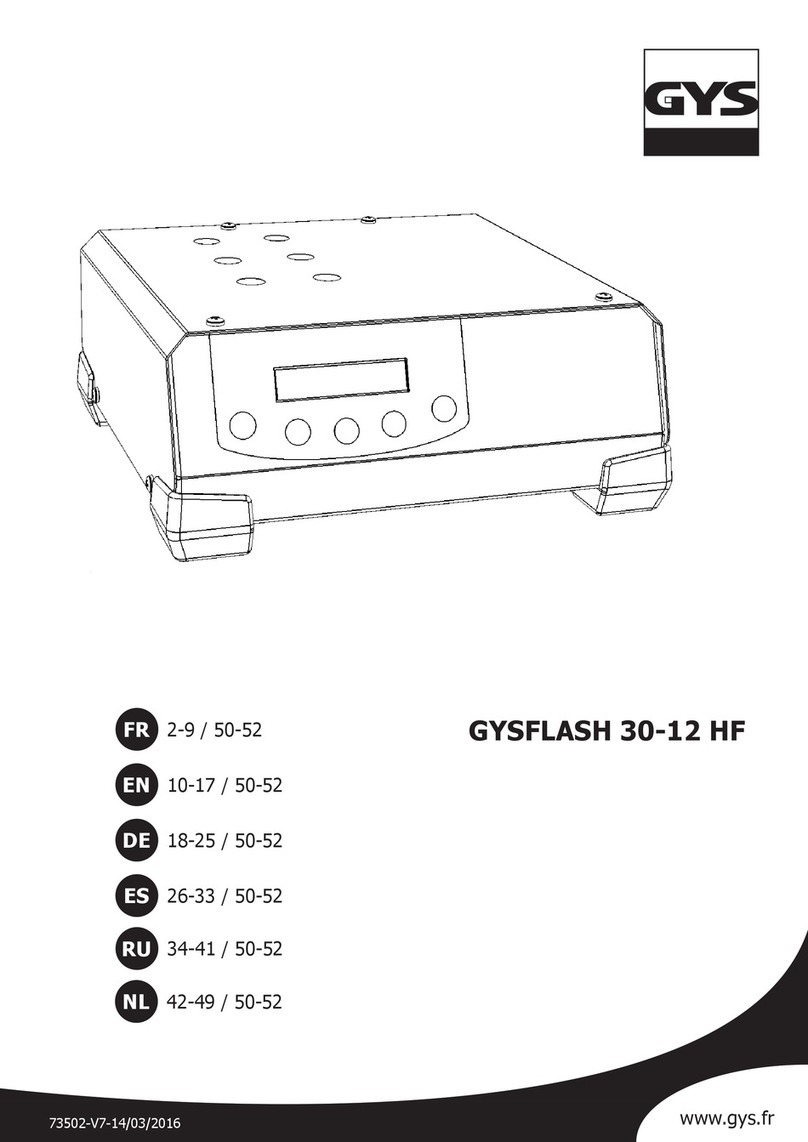
8
MODE DIAGNOSTIC, SHOWROOM et CHANGE BAT
L’appareil émet un signal sonore,
+ La led warning est allumée
+ l’afficheur indique :
« Vérifier la polarité »
Fonctionnement normal en mode
diagnostic sans batterie :
Pour une question de sécurité
Gysflash 75-12 HF demande à
l’utilisateur de vérifier le raccordement
des pinces (polarité) avant de lancer
le mode
L’afficheur indique :
« CONSOMMATION >75A »
+ led et Signal sonore
Consommation excessive par
rapport à la puissance du chargeur
Arrêter certains
consommateurs pour arriver à une
situation normale
l’afficheur indique :
« Pinces en court-circuit »
+ led et signal sonore
Pinces en court circuit Vérifier le branchement des pinces de
charge
l’afficheur indique :
« Connecter le chargeur »
Le chargeur ne détecte pas de
batterie connectée
Vérifier que les pinces sont bien
connectées à la batterie
Fonctionnement normal, appuyer sur
Start pour lancer le mode
Le Gysflash 75-12 HF délivre un fort
courant (entre 10A<75A) alors que
vous n’avez pas encore lancé votre
outil de diagnostic
De nombreux consommateurs sont
actifs sur le véhicule
Fonctionnement normal du Gysflash
75-12 HF Couper les consommateurs
pour vérifier que la batterie ne soit
pas trop déchargée (voir cause n°2)
Batterie déchargée
Votre batterie est profondémment
déchargée, le Gysflash 75-12 HF
délivre un courant pour la recharger
Attendre que le courant soit sous les
10A pour lancer le diagnoctic
GÉNÉRALITÉ
L’appareil émet un signal sonore,
+ La led warning est allumée
+ l’afficheur indique :
« Inversion de polarité »
Gysflash 75-12 HF a détecté une
inversion de polarité des pinces
Brancher la pince rouge au (+) et la
pince noire au (-)
l’afficheur indique :
« Connecter le chargeur »
Le chargeur ne détecte pas de
batterie connectée
Vérifier que les pinces sont bien
connectées à la batterie
L’appareil indique :
« Défaut Fusibles »
+ led et signal sonore
Mauvaise manipulation
Changer les fusibles internes par une
personne qualifiée
(ref 054651 : 80A)
L’appareil n’affiche rien
+ la led warning est allumée Réseau électrique défectueux
Vérifier que la tension du réseau
électrique est comprise entre 100 et
240V
L’afficheur indique :
« température trop élevée »
Entrées et sorties d’air obstruées
Veiller à dégager ou nettoyer les
sorties/entrées d’air
Ventilateur défectueux Contacter un revendeur
AVERTISSEMENTS
Gaz explosif, éviter les flammes et les étincelles Pendant la charge, la batterie doit être placée
dans un emplacement bien aéré
Protéger contre la pluie et l’humidité
Votre chargeur doit être raccordé à un socle de prise de courant relié à la terre
Si le câble d’alimentation est endommagé, ou si le fusible interne est fondu (ref 054651), il doit être
remplacé par le fabricant, son service après vente ou une personne de qualification similaire, afin
d’éviter un danger
